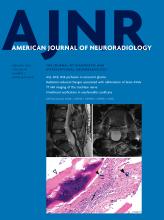In their article, Cogswell et al1 offered a valuable critical reflection on the past, present, and future challenges in the application of detection and reporting recommendations for amyloid-related imaging abnormalities (ARIAs) associated with amyloid β (Aβ)-lowering immunotherapy for Alzheimer disease (AD) in real-world clinical settings. Increased evidence suggests that drug-induced ARIAs are the iatrogenic manifestation of cerebral amyloid angiopathy–related inflammation (CAA-ri), a rare autoimmune encephalopathy associated with elevated CSF concentrations of spontaneous anti-Aβ autoantibodies (autoAbs) and transient focal areas of swelling (also known as ARIA-E in clinical trials) and CAA-related microhemorrhage (also known as ARIA-H in clinical trials).2,3
In this framework, research and experience in the comparison of ARIAs and CAA-ri in the past decade indicate 3 main critical considerations: First, evidence from trials is limited to an extremely well-selected and neuroradiologically monitored subpopulation of patients with AD. Therefore, current results may have limited generalizability to the broadened community of AD in real clinical settings. In fact, to minimize the occurrence of ARIA, common exclusion criteria are ≥5 cerebral microbleeds (CMBs), irrespective of their location, any cortical superficial siderosis (cSS), and a history of intracerebral hemorrhage (ICH) at baseline MR imaging. However, CMBs, ICH, and cSS do not completely account for the neuroradiologic semiology of small vessel diseases. Given the well-known comorbidity of CAA in AD, further research evaluating the combination of microhemorrhage and no hemorrhagic presentations to increase the sensitivity and specificity in the diagnosis and prediction of ARIA may reveal a strategic issue, as recently reported in the improved Boston criteria 2.0 for the diagnosis of CAA.4
Second, the acronym ARIAs was intended to strictly define the occurrence of neuroimaging abnormalities, not to provide information concerning the associated clinical manifestations. Indeed, current rating systems for ARIA have demonstrated no correspondence between the severity of ARIAs and clinical status and a poor capacity in advising about continuing treatment in patients presenting with mild and asymptomatic ARIA-E. The recent natural history study of CAA-ri in a large, multicenter, prospective longitudinal cohort from a real clinical practice highlighted the transient and potentially remitting nature of ARIA-E, with 84% of clinical and neuroimaging recovery within, respectively, 3 and 6 months and 38% of recurrences within 2 years, which were more common when intravenous corticosteroid therapy was suddenly discontinued without a slow oral tapering.2,3
Third, given the lack of samples and data in trials for independent research, the pathophysiologic mechanisms of ARIAs remain largely unknown. According to the ARIA paradox pathophysiologic model, ARIA-E is a complex and multifactorial phenomenon resulting from the imbalance between the autoantibodies-mediated removal of Aβ from plaques and the downstream effects that an excessive mobilization of the protein can cause on intramural periarterial drainage pathways and neuroinflammation. This hypothesis has been recently investigated in a longitudinal case series of CAA-ri showing a regional and temporal association between ARIA-E and microglial activation and the CSF levels of autoAbs.2 Most interesting, this study also showed that current ARIA-E rating systems alone might not fully capture the complex underlying biology of the phenomenon, suggesting that the combination of MR imaging markers and fluid-based biomarkers can increase the capacity to perform a correct diagnosis. To this end, high levels of autoAbs at baseline may constitute a risk factor, and the CSF testing for autoAbs may meet the specific requirement of companion diagnostic biomarkers for drug tailoring based on the individual risk for iatrogenic CAA-ri. Taken together, this evidence suggests that iatrogenic ARIA-E can be part of the increasingly recognized inflammatory spectrum in Aβ-driven pathologies of aging and that the current diagnosis of spontaneous and iatrogenic CAA-ri can be missed if not properly investigated.4
Increased understanding of the biology of ARIA should reveal a strategic area of research because it could advance the design of second generations of therapeutics and the discovery of the safety and response-to-treatment biomarkers to improve how we currently report, treat, and manage spontaneous and iatrogenic CAA-ri.
Then, a multidisciplinary and interdisciplinary joint effort among neuroradiology, clinical, and translational researchers has never been so important. A common research strategy for ARIA and CAA-ri could reveal strategic information to advance current knowledge gaps and issues in the field, including providing convincing plans for the treatment and management of ARIA when these drugs enter real clinical practice. Only by working together will we really make progress.
Footnotes
Disclosure forms provided by the authors are available with the full text and PDF of this article at www.ajnr.org.
References
- © 2023 by American Journal of Neuroradiology












